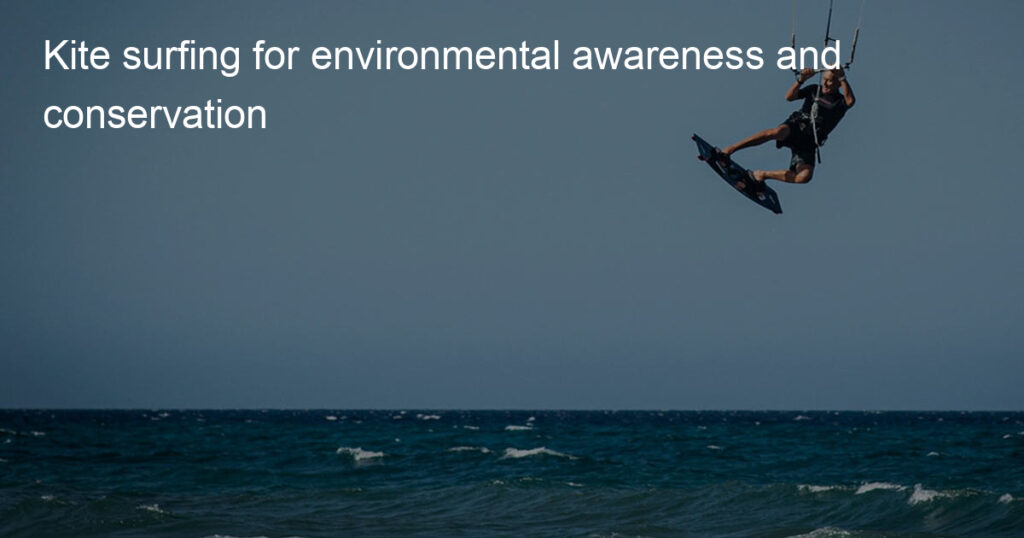If you’re an outdoor enthusiast looking for a fantastic new way to explore the natural environment, kite surfing is probably on your radar. It’s an activity that combines adrenaline-filled stunts with peaceful moments spent admiring nature from high above – plus it makes you look cool! More recently though, something else has been gaining steam amongst kitesurfers: environmental awareness and conservation.
As more people are discovering just how wonderful this extreme sport can be, they’re wanting to protect the beaches they use and help ensure its beauty will last throughout future generations. This Sustainable Kite Surfing blog post will provide plenty of tips and advice on how to get involved and make a real difference in the world. So throw on some sunscreen (or your wetsuit) and let’s go on an eco-friendly adventure together!
What are the environmental considerations in surfing?
Surfing might instantly evoke images of clear blue waters and lush green coastlines, but environmentalists highlight that there can be serious implications for the environment when it comes to surfing. In particular, plastic pollution is a huge problem in surfing spots all over the world, with single-use plastics finding their way into ocean ecosystems at an alarming rate.
Furthermore, surfers are often disproportionately responsible for higher mechanical beach erosion, threatening coastal habitats and sensitive species. As such, surfers must take responsibility and make sure they do their part to reduce plastic waste, leave protected stretches of coastline undisturbed and more carefully consider their impact when heading out on their boards. That way we can continue to enjoy the wonders of surfing while protecting our environment at the same time.
What are the harmful environmental impacts of surfing?
Surfing may be one of the oldest activities on Earth and is still enjoyed by many today. That being said, it’s important to note that this beloved sport also hurts the environment. Certain materials used to make surfboards can contain toxic chemicals and polystyrene foam from them can end up in ocean waters, where it can fragment into microplastics that are eventually ingested by marine life.
The hazards of this form of littering go beyond surfboards, as runoff from polluted streets and sewers often finds its way into waves, potentially posing a health risk to individuals who participate in surfing or consume seafood in the area. To reduce these effects, we should look for greener ways to make boards, such as using sustainable wood or bio-based plastics and better-educating beach-goers about proper waste disposal. It’s our collective responsibility to protect the planet that we play on!
How does surfing affect coral reefs?
Surfing is often seen as a peaceful beach activity, usually done far away from busier activities. However, its impact on coral reefs can be much farther reaching. Surfboards are made of materials that are not always reef-safe, and when these come into contact with corals they can cause devastating damage. Other factors like an increase in human traffic to the waters near reefs lead to increased sediment runoff which can smother coral.
Additionally, overcrowding in these spots can lead to more pollution ending up in the waters causing further damage to delicate reef systems. While surfing is a great way for people to enjoy the ocean, taking steps to reduce these impacts is essential for preserving our vulnerable coral reefs.
Why is offshore wind better for surfing?
Offshore winds are a surfer’s dream! The gusts blow consistently onto the shore, which makes for a smooth sail as you ride the waves. This type of wind is more favorable for experienced surfers because it allows them to navigate more precise turns and perform tricks that require more depth of control – something you can’t get with an alternating onshore-offshore wind.
Additionally, offshore winds create bigger waves that are ideal for those looking to take their surfing skills to the next level. For surfers looking for an even more exhilarating experience, offshore winds also generate larger swells that can test even the most seasoned adventurers in search of a thrilling ride.
What is the danger of kitesurfing?
Kitesurfing is an exhilarating sport that can provide hours of thrill and fun, but it has one major downside–the potential for serious injury. While any physical activity carries a risk of danger, kitesurfing requires you to be aware of your surroundings at all times. From strong winds, unstable surfaces, and even other kiters in the area, these hazards can quickly turn an otherwise joyous ride into a winding trip to the hospital.
To minimize the risk of injury, it’s important to wear protective gear and make sure you are only kiting in safe locations that fit your skill level. With some common sense and caution, kitesurfing can provide amazing experiences with minimal danger.
Summary: Kite surfing for environmental awareness and conservation
Kite surfing for environmental awareness and conservation is such a worthwhile activity to get involved in. Not only do you learn new skills and challenge yourself, but you can also make your voice heard and contribute to preserving our environment.
Every day brings opportunities for us to become empowered advocates for nature conservation, so why not seize the moment, hop on your board, grab some friends, and head out into the waves? The ocean is yours to explore – what will you discover today? Our future depends on it! So let’s continue doing our part by kite surfing against plastic pollution and joining in the fight against climate change. Together we can make a difference.








